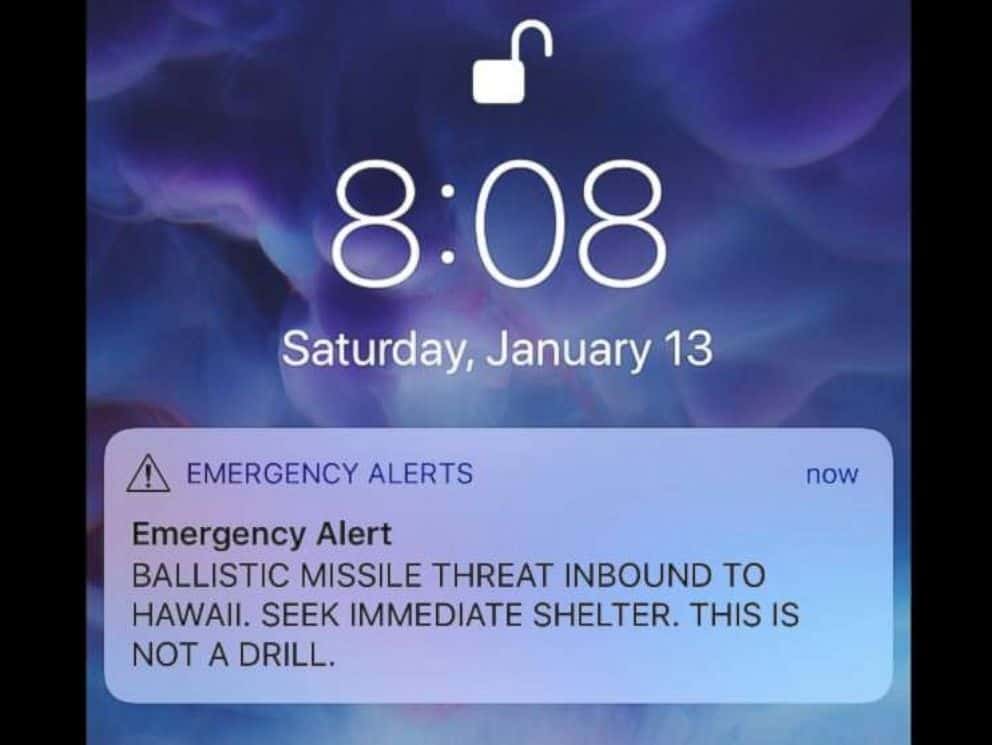A “false” warning of a missile threat in Hawaii sent White House aides scrambling Saturday, frantically phoning agencies to determine a response and triggering worries about their preparedness almost a year into the Trump administration. The questions many have asked are why did it take so long to declare the warning was a false alarm and why did it take President Trump so long to issue a statement?
Saturday morning PST, people in Hawaii received an emergency alert notification on their cell phones about an incoming missile that read,
“BALLISTIC MISSILE THREAT INBOUND TO HAWAII. SEEK IMMEDIATE SHELTER. THIS IS NOT A DRILL.”
The state’s governor, Democrat David Ige, attributed the error to a “wrong button” pressed during a shift change, but it took a full 38 minutes for the state to advise residents of the error.
The president, who is in Florida for the weekend, was at his golf course in West Palm Beach during much of the incident, according to a press report. His motorcade left the golf course and returned to his nearby private club, Mar-a-Lago, just as Hawaii residents were being told it was a false alarm.
President Donald Trump’s Cabinet has yet to test formal plans for how to respond to a domestic missile attack ever since the threat has presented itself from North Korea led by leader Kim Jong-Un, according to a senior administration official. John Kelly, while serving as secretary of Homeland Security through last July, planned to conduct the exercise. But he left his post to become White House chief of staff before it was conducted, and acting Secretary Elaine Duke never carried it out.
The administration ran the exercise on Dec. 19 at the deputies level, at the behest of Kelly and newly sworn-in Homeland Security chief Kirstjen Nielsen. But as of Saturday, when Hawaii residents were taking cover, the federal government had yet to play out the same scenario with Cabinet secretaries at what is known as the principals level.
